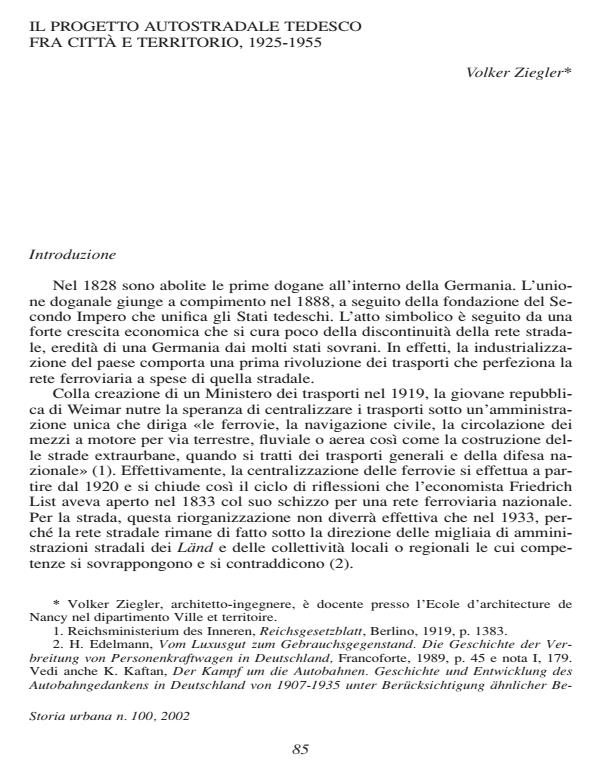Il progetto autostradale tedesco fra città e territorio: 1925-1955
Journal title STORIA URBANA
Author/s Volker Ziegler
Publishing Year 2003 Issue 2002/100
Language Italian Pages 35 P. File size 1175 KB
DOI
DOI is like a bar code for intellectual property: to have more infomation
click here
Below, you can see the article first page
If you want to buy this article in PDF format, you can do it, following the instructions to buy download credits

FrancoAngeli is member of Publishers International Linking Association, Inc (PILA), a not-for-profit association which run the CrossRef service enabling links to and from online scholarly content.
This article looks at German manifestations of modernization during the complex historical period running from the end of the First World War to the beginning of the Cold War. Taking into consideration that one of the most potent of symbols of modernization was the car, it explores the history of arterial roads in Germany, given its decisive role in the transformation of the city and the countryside. Due to its complex nature, the phenomenon of the arterial road was necessarily at the core of interaction between social, political, economical, strategical planning and formal interests that determined nearly every construction project during that period, regardless of its scale. However, it is essential to take into account the interaction between project cycles and political cycles, each with its own time-frame: during the period of the Weimar Republic, highway planning and regional planning arose in a common context determined by cities’ economical matters rather than national policies. The influence of Italy’s autostrade on German highway planning evidently stretches from those initial projects to the Nazi decade which saw the realization of the Autobahn, Volkswagen, and urban Neugestaltung programs. As a product of centralized state policies, characterized by their implicit national scale, Nazi projects of the thirties deployed all conventional means of spatial intervention: architecture, engineering, town planning, regional planning and landscaping. Given the highly contradictory nature of the socio-political climate, industrial and functional aesthetics had to be reconciled with the desire for a return to national roots, to regional nostalgia, or to a monumental classicism. Having been depleted of this symbolism during the reconstruction period following WW II, arterial roads became a constitutional part of new urban landscapes and reorganized the cities in anticipation of the German economical miracle.
Volker Ziegler, Il progetto autostradale tedesco fra città e territorio: 1925-1955 in "STORIA URBANA " 100/2002, pp , DOI: